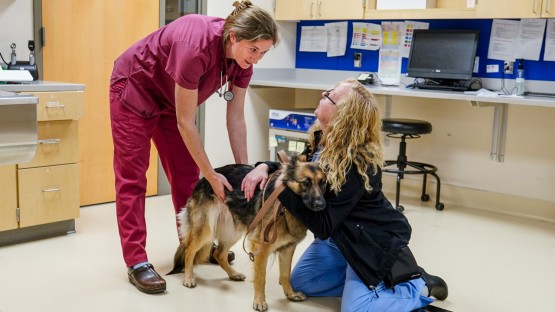Fitness
E. coli variant may cause antimicrobial resistance in dogs, humans | Cornell Chronicle

Researchers studying antimicrobial-resistant E. coli – the leading cause of human death due to antimicrobial resistance worldwide – have identified a mechanism in dogs that may render multiple antibiotic classes ineffective.
The paper, published July 16 in the journal Applied and Environmental Microbiology, opens up new avenues for therapies to treat both animals and humans – and establishes clinical infections in dogs as a surveillance approach for public health.
The research team analyzed more than 1,000 genomes of the resistant E. coli pathogen isolated from sick dogs and identified a set of genes that evolutionary selection tests revealed were becoming obsolete in the genome and were losing function. But in an unusual twist, the loss of function may have repurposed this set of genes to create conditions that trap antibiotics in E. coli’s cell membrane, preventing them from entering the bacteria.
“I like to think of it as a serendipitous event of evolution, because it appears that these capsule proteins have been repurposed to trap antibiotics,” said Laura Goodman, assistant professor in the Department of Public and Ecosystem Health and in the Baker Institute for Animal Health in the College of Veterinary Medicine (CVM) and the paper’s senior author.
“What appears to be happening is that we’re looking at a loss of function mutation that is potentially conferring a new phenotype unrelated to its original purpose,” she said.
One particular gene, a variant of Wza, was especially implicated in the process. Under normal circumstances, the gene expresses a protein that forms a channel through the bacterial outer membrane, which allows molecules to exit the cell. “What we think is happening is that antibiotics can use that channel as a portal to get into the cell,” Goodman said. “And this loss-of-function mutation we’ve identified, across not just one gene but an entire set of genes, is allowing the channel to close in such a way that antibiotics get trapped.”
This study may not only help improve canine health, but is also an example of how dogs serve as an important model for human health.
Dogs tend to share similar E. coli strains as their owners and are treated with similar antibiotics. Two particular classes of antibiotics – third generation cephalosporins and quinolones – are considered critically important by the World Health Organization. Clinicians and public health experts are particularly concerned about overuse of these drugs in veterinary medicine; although there are no legal restrictions on using these drugs in dogs, big efforts have been made to promote good stewardship of these treatments.
The researchers hypothesized that mechanisms affecting those classes of drugs identified in dogs would also be important for humans, Goodman said. “When we looked for this genetic variant in human infections, we found many of them in hospital and public surveillance data of E. coli and Klebsiella infections in people,” she said.
Next steps will include further experimentation to fully understand the antimicrobial mechanism in E. coli, supported by the study’s strong statistical evidence. Researchers may now explore potential new drug targets that would prevent the pore in the E. coli membrane channel from closing, allowing antibiotics to freely move inside the cell.
The study is unique in that it provides a mechanistic understanding of antibiotic resistance and fills important gaps in surveillance for human E. coli infections using leftover clinical samples from dogs that were collected as part of routine care, Goodman said.
Kristina Ceres ‘15, DVM/PhD ’24, is the paper’s lead author. Cornell faculty Michael Stanhope, Casey Cazer, and Qi Sun are also among the co-authors.
The study was supported and performed in collaboration with the U.S. Food and Drug Administration’s Veterinary Laboratory and Response Network.










